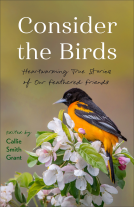
Great Fear on the Mountain
by Charles Ferdinand Ramuz
This title was previously available on NetGalley and is now archived.
Send NetGalley books directly to your Kindle or Kindle app
1
To read on a Kindle or Kindle app, please add kindle@netgalley.com as an approved email address to receive files in your Amazon account. Click here for step-by-step instructions.
2
Also find your Kindle email address within your Amazon account, and enter it here.
Pub Date 6 Aug 2024 | Archive Date 13 Jun 2024
Talking about this book? Use #GreatFearontheMountain #NetGalley. More hashtag tips!
Description
Teeming with tension, this immersive, rhapsodic story transports readers to the Swiss mountainside, bringing to mind the writing of Thomas Mann while offering character studies as vivid and bracing as Eudora Welty’s.
Feed is running low in a rural village in Switzerland. The town council meets to decide whether or not to ascend a chimerical mountain in order to access the open pastures that have enough grass to “feed seventy animals all summer long.” The elders of the town protest, warning of the dangers and the dreadful lore that enfolds the mountain passageways like thick fog.
They’ve seen it all before, reckoning with the loss of animals and men who have tried to reach the pastures nearly twenty years ago. The younger men don’t listen, making plans to set off on their journey despite all warnings. Strange things happen. Spirits wrestle with headstrong young men. As the terror of life on the mountain builds, Ramuz’s writing captures the rural dialog and mindsets of the men.
One of the most talented translators working today, Bill Johnston captures the careful and sublime twists and turns of the original in his breathtaking translation.
Advance Praise
"Nature’s terrifying power is on display in a new translation of this breathtaking 1926 novel . . . Lush prose (snowy mountain peaks seem “made of metal, of gold, steel, of silver; making all around you a sort of jeweled crown”), and profound insights about the insignificance of human life and the force of superstition pave the way to an earth-shattering finale. This thrilling tale has a timeless potency." — Publishers Weekly, starred review
Available Editions
| EDITION | Other Format |
| ISBN | 9781953861825 |
| PRICE | US$22.00 (USD) |
| PAGES | 238 |
Available on NetGalley
Average rating from 5 members
Featured Reviews
Great Fear on the Mountain by Swiss author Charles Ferdinand Ramuz was first published in 1926 and translated from French by Bill Johnston. It is a tragic allegorical man versus nature story which takes place in Switzerland, written simply and powerfully in a very poetic literary way.
Despite warnings from older and experienced men, young men take their cattle to graze on the high pasture on a mountain after Village Council meets. Every villager needed cattle to survive for milk, cheese and meat so their cattle are priceless. Cattle are crowned in floral wreaths (I have seen such mountain festivals in Europe) and venerated. But once on the mountain strange things begin to happen as predicted as curses and lore are rife. Nothing is as it seems with distorted reality and as provisions run out the young men grow hungry, thirsty and desperate. The mountains give and they take.
The writing style isn't usually my wheelhouse but in this case it is a breath of fresh air. I enjoyed it more and more as the story went on. Descriptions such as whites and greys, weather, birds and glaciers are emphasized.
My sincere thank you to Archipelago Books and NetGalley for providing me with a digital copy of this astonishing book.
Written in 1925, this novel is set in a remote Swiss mountain village at the approach of summer. Twenty years ago, something happened in the mountain.
Despite the warnings of the older residents who vividly remember the ominous “events”, a young village chairman sways the young people to support his decision to use the lush, untouched high pasture of the Sasseneire mountain to relocate the cattle over the summer months. This would be critical to the impoverished community, their current pasture no longer sufficient for the animals, their only source of income.
Superstition and fear are running rife, but a group of men get hired for the summer, each having their own reason. As they journey up the mountain, a sense of unease settles over them, and the beauty of nature is juxtaposed with the growing tension among the men.
Days pass, and unsettling events start to unfold. Disappearances, strange noises at night, and a general feeling of foreboding plague the group.
This book is reminiscent of some ancient folktale rooted in the harsh realities of rural life. The atmosphere is dark and crushing at times.
The writing style is unique yet unassuming, partly due to its original Swiss French. However, I do have some issues with the translation in parts.
The descriptions of nature are the absolute gem of this book; the mountain is described in vivid colours, and the darkness of night is a crushing, filling weight. The narration is both in the third and in the second person, points of view seemingly omniscient and unidentified. The men are sometimes described in a way that makes it appear they are being observed, creating a sense of paranoia. The author makes the mountain feel like some ominous, almost pagan God while making the reader second-guess all this by the reality of what is described. I have never read a book like this.
The writing style might take some getting used to and can be a bit repetitive, but I believe this book is a “must-read”.
Thank you to Netgalley and the publisher for an ARC of this book for my honest review.
 Reviewer 1122374
Reviewer 1122374
Originally written in French and published in 1926, Great Fear on the Mountain explores themes that, while reflective of its time, hold significant relevance for modern readers, particularly concerning our relationship with nature. Ramuz depicts the scenery beautifully, also strikingly. Sasseneire, a mountain pasture, is where a group of village residents has set up camp for the summer, along with their seventy animals. The mountain itself takes on a character of its own, marked by shifting shadows, changing light, and an eerie stillness that defines this part of the landscape.
"You listened, nothing came, it was a windless night; you listened some more, still nothing came. And so, by contrast, inside the chalet the crackling of the fire began to be a big sound, or when someone shifted their foot, or coughed, or when they spat."
The author's use of repetition is effective, though I can see how some readers would find this tiresome. It lends a sort of rhythm to the story, sets the pace, reinforces the points, and personally this technique is already familiar to me. What really caught my attention however, is how Ramuz plays with perspectives. The story is primarily narrated in the third person, yet at seemingly random intervals it switches to 'you', immersing the reader directly into the character's experience; instantaneously, the reader sees and hears through the character's eyes.
At times, the narrative shifts to a collective 'we', placing readers in the shoes of the villagers, making them feel like a part of the small, isolated community. Ramuz also does this by switching between past and present tense, which in turn draws attention to specific lines. This took a little while for me to get used to.
Overall, I thoroughly enjoyed this story and would recommend it to readers who appreciate nature writing, close-knit community tales, and local lore.
 Mandy J, Reviewer
Mandy J, Reviewer
In a remote Swiss alpine village feed is running low and the town council meets to decide whether to open up the pastures on the mountain. Some mystery surrounds these pastures. Something terrible happened 20 years ago and the older inhabitants are against going up there again. However, the younger members of the community decide they should go in order to make some extra income, and they are not as fearful as their elders. So seven villagers go to spend the summer up on the mountain, tend the cattle and make cheese. However, things start to go wrong and they become more and more afraid. The events of 20 years before are never fully explained, but as a sense of menace grows it looks as though something equally terrible is about to occur. The tension is expertly built up and sustained as the reader as well as the villagers contend with the unknown. The cattle start to fall sick and quarantine is imposed, adding to the fear and isolation of the herders. It’s an enigmatic tale, with little spelt out for the reader. Nature is seen as malevolent and far more powerful than man. The mountain is a character in its own right and no one can withstand its intentions. The lyrical descriptions of nature are offset by its terrifying power. A changing perspective adds to the sense of unease, and repetition of key phrases is used to good effect. It’s a haunting and claustrophobic tale, expertly paced, understated and quite unforgettable. A small gem.
Readers who liked this book also liked:
Philip Hoare
Arts & Photography, Biographies & Memoirs, Nonfiction (Adult)
Stephen Maitland-Lewis
Historical Fiction, Mystery & Thrillers, Women's Fiction
Pirkko Saisio
Biographies & Memoirs, General Fiction (Adult), Literary Fiction


















